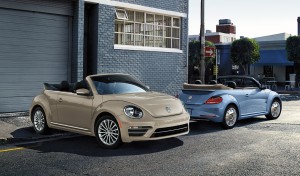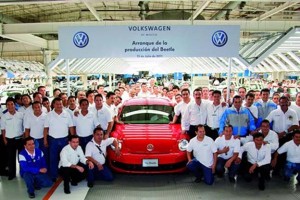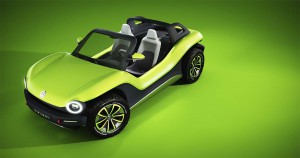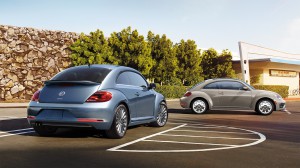
The last of the VW Beetles come in two “final edition” colors and styles, including convertibles. The last one rolls off the line on June 10.
The last Volkswagen Beetle, one of nearly 6,000 “Final Edition” models, will roll off the automaker’s assembly line in Puebla, Mexico on July 10, and barring a last-minute reprieve, it will mark the end of the line for the longest-running nameplate in automotive history.
Original conceived by German dictator Adolph Hitler and designed by Ferdinand Porsche, the man behind the eponymous sports car company, the first Beetle was built back in 1938. With only two breaks, millions have been produced in the eight decades since then.
In an era when sedans and coupes have largely been replaced by SUVs and CUVs, demand for the Beetle has been negligible in recent years, though there was a modest surge in recent months as fans raced to buy what were expected to be the last of the little cars.
The decision to end production this week was no surprise. VW officials have been hinting for several years that the time was approaching and, last August, they announced the launch of the Final Edition, a limited-run model offered in two unique colors and adding some unique features, including special wheels and body trim. It was simply a matter of confirming when the last model would actually roll off of the line in Puebla, the only plant that has built the Beetle for a number of years.
(UAW Loses Organizing Bid at Volkswagen Chattanooga Plant)
The little coupe was originally conceived in the years leading up to World War II as the “people’s car,” or “Volkswagen,” in German. Hitler turned to Austrian engineer Ferdinand Porsche to lead the development project. But the project was soon halted, the country’s manufacturers retooling for war.
The Volkswagen factory in Wolfsburg was heavily bombed by the Allies and the Beetle might have vanished entirely if it weren’t for British Major Ivan Hirst, who was assigned to oversee the restoration of VW’s factory after Germany’s surrender. He spotted one of the little coupes under a pile of rubble and decided to start building the car again.
But the key to the Beetle’s success came from the decision to start selling it in the U.S. a few years later. Demand was modest, at least initially, but by the mid-1960s, the Beetle became a counterculture icon, an alternative to the heavy metal Detroit was offering. Ironically, the car crafted for a German dictator soon was associated with the Hippies demanding an end to the Vietnam War.
By February 1972, production had topped 15 million, surpassing that of the Ford Model T which had been the world’s best-selling nameplate. Two decades later, production had topped 21 million. But demand was beginning to falter by 1992 and, despite offering a broad mix of variants including the larger “Super Beetle,” VW began to look for alternatives. It shifted to what was, in the U.S., called the Rabbit, and better known as the Golf everywhere else.

Workers in Puebla, Mexico celebrate the launch of production of the latest Beetle in 2011. The last one rolls off the line on July 10.
By 2003, with production running just 30,000 annually – down from a peak of 1.3 million, Volkswagen pulled the Beetle from production. But the banishment didn’t last long. The “New Beetle” debuted even before the last of the old models rolled off the line in Puebla.
(First Drive: 2019 Volkswagen Golf 1.4T S)
That new version never really connected with buyers, but Volkswagen was determined to give it one more try, launching a third version in 2011. It featured a more prominent nose, more in line with the original, as well as a notably larger interior. And it got a big send-up when, on Nov. 22, 2010 Oprah Winfrey announcing on her TV show she would give one of the third-gen Beetles to everyone in her audience.
But sales never came close to that of the original. And they have steadily declined over the last several years, as buyers in the U.S. – traditionally the Beetle’s biggest market – and elsewhere began to shift over to sport- and crossover utility vehicles.
U.S. demand has actually increased slightly for the first six months of the year, largely due to demand for fans hoping to get one of the last Beetles. But at a total of 9,398 — up from 7,967 during the first half of 2018 – Volkswagen sold only slighter more of the Bugs in six months as it moved in a week during the car’s heyday.

The new I.D. Buggy concept is giving some Beetle fans hope that this vehicle could pave the way for a Beetle EV.
As for the future, VW now offers a wide array of products and is planning to add even more to its line-up as it grows its battery-car line-up. But could the Beetle once again find its way back into the mix, perhaps in all-electric form?
“There are no immediate plans to replace it,” former Volkswagen Group of American President Hinrich Woebcken said last August, when the Final Edition Beetle was launched. But he quickly added that, “I would also say, “Never say never.”
(Volkswagen’s New Ad Campaign Brings Automaker into the Light)
At the New York International Auto Show in April VW unveiled a battery-powered dune buggy concept that some Beetle fans saw as a significant move. Back in the 1960s and 1970s, the little VW was the most popular “donor car” for those building dune buggies. For their part, Volkswagen officials declined to say whether the concept hints that a new version of the Beetle is in the works. But considering the way it has come back to life repeatedly over the past eight decades, few observers are ready to rule out that possibility.

